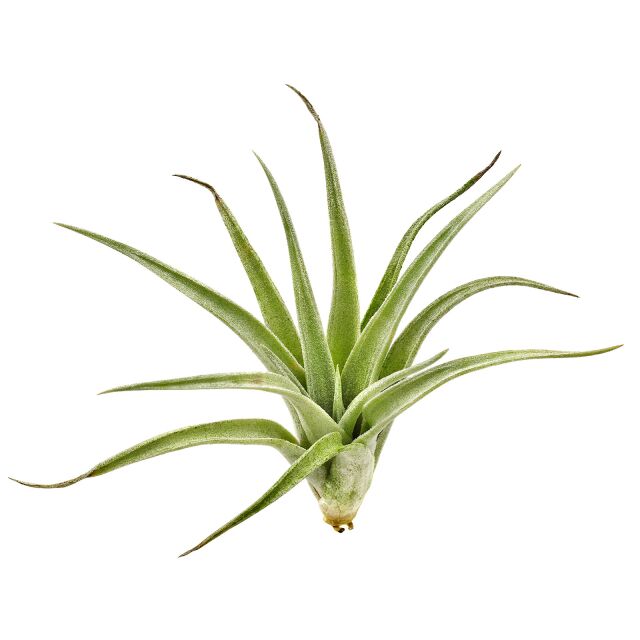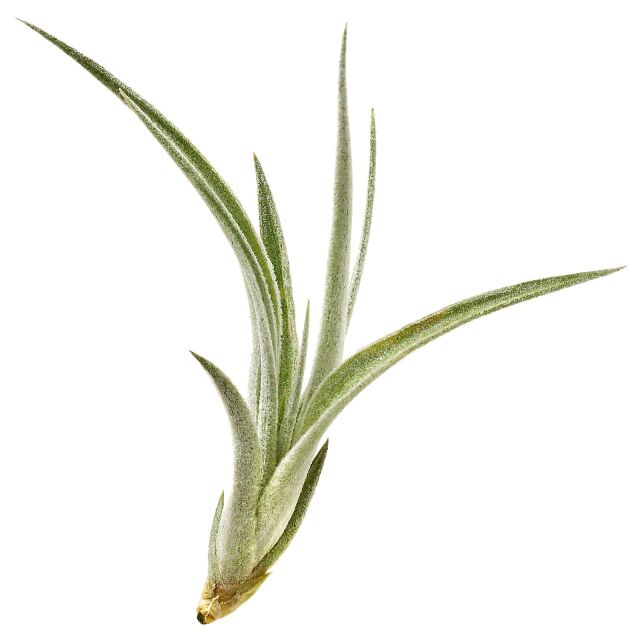Lorentz' air plant




Tillandsia lorentziana
Lorentz' air plant
- Large grey Tillandsia
- Silvery grey-green and velvety
- Recommendable for dry forest terrariums
Item question
We’re here for you!
Please enter your question and e-mail and we’ll contact you as soon as possible. It usually takes us up to 24 hours during business days to respond.
Thank you for your question!
Thank you, we’ll get in touch!
Close window
You already sent us a question.
Please wait a few minutes
Description
Tillandsia lorentziana is a large tillandsia from subtropical areas of Bolivia, southern Brazil, Paraguay and northern Argentina. It occurs as an epiphyte on trees or as a lithophyte. Its silvery grey-green and velvety scaled leaves grow to 20 - 40 cm long and sit in a rosette. At flowering time a tall inflorescence appears with several reddish spikes. Purple, tubular flowers appear on these.
T. lorentziana belongs to the type of "grey tillandsias". These plants usually come from drier, more exposed places than the so-called green tillandsias. They often grow higher up in the treetops, in dry forests or even in deserts with a lot of fog. These atmospheric plants absorb water and nutrients from rain, mist and dust completely via the many absorbent scales on the leaves. The roots, if still present, serve as an adhesive organ. In culture, such tillandsias are tied or glued to hard materials such as wood or stones. The species prefers a very light, airy place. Spray the plants with soft water about two to three times a week. Dipping is also possible. After watering, the plant should be allowed to dry. Ideally, an orchid and tillandsia fertiliser should be added every second watering during spring and summer.
Like almost all tillandsias, T. lorentziana also forms several daughter rosettes at its base after flowering. These can be carefully separated from a size of about one third of the mother plant. If they are not separated, they grow together to form a larger cluster.
Tillandsia lorentziana is a larger epiphyte that is an eye-catcher in large terrariums, especially at flowering time. According to its origin, the species is suitable for subtropical terrariums with cooler winter temperatures.
Profile
| Tillandsia lorentziana | |
| Cultivation options | Epiphytic |
| Growth height | approx. 20 - 40 cm |
| Temperature | approx. 10 - 30 °C |
| Humidity | At least 60 % |
| Light requirement | Bright to sunny, no direct sun at noon |
| Watering | Spray every 2 - 3 days with soft, low-lime water, e.g. rainwater, or dip once a week |
| Fertilising | In spring and summer, with every second watering, orchid or Tillandsia fertiliser |
| Propagation | Formation of pups after flowering |
| Suitable for | Moderately dry subtropical terrariums |
| Cultivation options |
| Epiphytic |
| Growth height |
| approx. 20 - 40 cm |
| Temperature |
| approx. 10 - 30 °C |
| Humidity |
| At least 60 % |
| Light requirement |
| Bright to sunny, no direct sun at noon |
| Watering |
| Spray every 2 - 3 days with soft, low-lime water, e.g. rainwater, or dip once a week |
| Fertilising |
| In spring and summer, with every second watering, orchid or Tillandsia fertiliser |
| Propagation |
| Formation of pups after flowering |
| Suitable for |
| Moderately dry subtropical terrariums |
Terrarienpflanzen
Our terrarium plants give every terrarium an individual, natural atmosphere and at the same time provide a healthy environment for all terrarium inhabitants. Our wide range of tropical, subtropical and even arid plants are easy to combine and enhance any terrascape. Whether it's strong succulents, subtle tillandsias, eye-catching neoregelias or wonderful orchids - we offer terrarium plants for different terrascapes from rainforest to desert.
General information
| Item no. |
|
| EAN | |
| Weight | 0,01 kg |
| Shipping weight | 0,06 kg |
Customers ask customers
You have questions about this product? Ask other customer or our support team about this product!